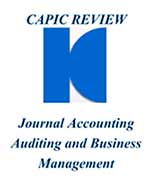Impairment of mining assets according to the international accounting standards and Earnings management: evidence for chilean mining
Published 2016-12-10
Keywords
- Mining Chile,
- Impairment Test
How to Cite
Abstract
The year 2015 was marked by a decline in the prices of different metals, including copper. Chile is characterized by being a historically mining country, and multiple effects have been foretold in the national media.
The objective of this research is, firstly, to verify the real effects of the decline of the price of copper in the financial statements of the Chilean mining companies by studying a sample of annual financial statements of 33 mining companies. Secondly, to confirm if the managers of the mining companies of the sample use the discretion provided by the International Accounting Standards in the application of impairment tests to their assets.
Specifically, the impact of the decline in the price of copper it´s analyzed regarding the carrying amount of Inventories, Property, Plant and Equipment (PP&E), and Intangible Assets.
The results confirm that only 36% of the companies of the sample applied an impairment test to their assets, and those that show a greater impact on the Financial Statements are related to mining operations that have exploitation difficulties.
Downloads
References
2. Elliott, J. & Hanna, J. (1996). Repeated accounting write-offs and the information content of earnings. Journal of Accounting Research, 34, 135-155.
3. Elliott, J., & Shaw, W. (1988). Write-Offs as Accounting Procedures to Manage Perceptions. Journal of Accounting Research, 26, 91-119.
4. Hilton, A. & O’Brien, P. (2009). Inco Ltd.: Market Value, Fair Value, and Management Discretion. Journal of Accounting Research, 47 (1), 179-211.
5. Jordan, C. & Clark, S. (2004). Big bath earnings management: the case of goodwill impairment under SFAS No. 142. Journal of Applied Business Research, 20 (2), 63-70.
6. Rees, L.; Gill, S. & Gore, R. (1996). An Investigation of Asset Write-Downs and Concurrent Abnormal Accruals. Journal of Accounting Research, 34, 157-169.
7. Sevin, S. & Schroeder, R. (2004). Earnings management: evidence from SFAS No. 142 reporting. Managerial Auditing Journal, 20 (1), 47-54.
8. Stolowy, H. & Breton, G. (2003). La gestion des données comptables : une revue de la littérature. Comptabilité - Contrôle – Audit, 1 (9), 125-151.
9. Cochilco (2015). Anuario de estadísticas del cobre y otros minerales 1995-2014. Santiago de Chile: Cochilco.
10. U.S. Geological Survey (2015). Mineral Commodity Summaries 2015.Virginia: USGS.
11. Walsh, P., Craig, R. & Clarke, F. (1991). Big Bath Accounting Using Extraordinary Items Adjustments: Australian Empirical Evidence. Journal of Business Finance & Accounting, 18 (2), 173-189.
12. Zucca, L. & Campbell, D (1992). A Closer Look at Discretionary Writedowns of Impaired Assets. Accounting Horizons. 30-41.


































